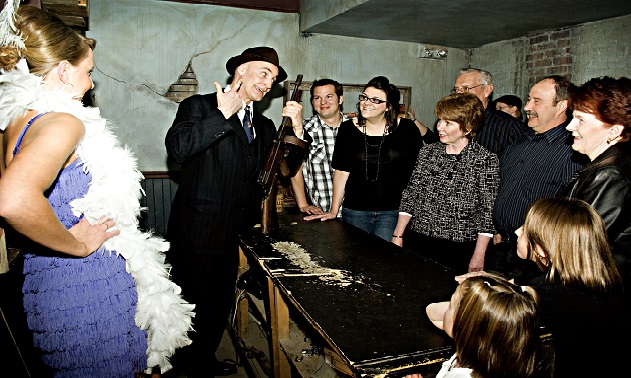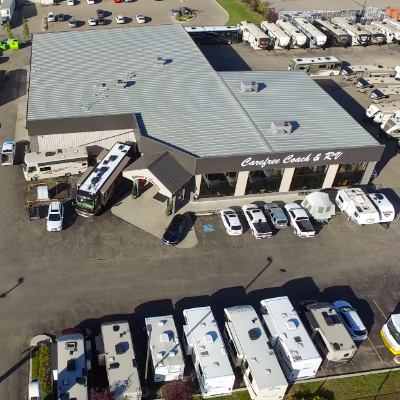Visiting Saskatchewan’s past
Discover the top three heritage sites in Saskatchewan as recommended by RVers

Looking for must-see historical sites for an upcoming trip to Saskatchewan? Whether it’s finding a friendly local or chatting with a neighbour at the RV park, most travellers know that networking is often the best way to get suggestions for a destination. Here at RVwest we host annual Reader’s Choice Awards where we ask our RVing audience for their suggestions. Turns out they know about a few great historical sites from the land of the living skies.
Danceland Ballroom at Little Manitou Lake
You’ve heard of the Dead Sea, but Israel might be a little out of your RV’s reach. Little Manitou Lake, however, is not. Located just outside of Watrous, Saskatchewan, this body of water is one of a kind in North America. Ten times saltier than the ocean, the lake has long been known for its therapeutic qualities. The Manitou Springs Resort and Mineral Spa makes it easy to enjoy the relaxing benefits of the mineral-rich water, or simply enjoy an afternoon at the beach.
To give you double the bang for your destination buck, RVwest readers recommend Danceland, which is right on Little Manitou Lake. Danceland was originally built in 1928 and is still a hoppin’ place. What makes the dance hall unique is that the 5,000-square-foot maple floor is built on horsehair. The floor can bounce about an inch and a quarter with a crowd, providing an exceptional dance experience. Danceland has a long history of hosting notable performers and today a controlled volume makes it easy to socialize when taking a break from hitting the floor. The venue is open throughout the year holding pattern and square dances, buffets, dinner theatre and gospel shows in addition to Friday and Saturday night dances.
Fort Pitt Provincial Park
It’s a provincial park with canoe access and picnic areas, but Fort Pitt was also the location of a storied past. Originally founded in 1830, The fort was an important Hudson’s Bay Company trading post at a bend in the North Saskatchewan River. In 1876, Fort Pitt was the site for the signing of Treaty 6, an agreement between the Canadian government and the area's native tribes. Then, in 1885 during the North-West Resistance, Chief Big Bear’s Cree band captured the post, killing a policeman in the process, and burned several buildings to the ground. Although Fort Pitt was partially rebuilt the following year, it was abandoned in 1890.
Visitors can now take a walking path to view the burial grounds and partially excavated remains of Fort Pitt and the palisade. There are also interpretive panels describing the history and daily life of the fort, along with commemorative plaques. It’s the perfect opportunity to let history and your imagination take you away to a time of pemmican, skirmishes and the fur trade.
The Tunnels of Moose Jaw
A Saskatchewan heritage favourite with our readers, The Tunnels of Moose Jaw site literally opens the dark underbelly of Moose Jaw to its guests. This attraction combines special effects, actors and animatronics in an interactive storyline. Tours are almost an hour and take visitors into a tale that’s based on history and hearsay.
The Passage to Fortune tour shows the harsh lives of Moose Jaw’s Chinese population at the beginning of the 20th century. Thanks to racism and the notorious Chinese head tax, many Chinese residents lived underground, struggling to survive or even raise families in the dark, oppressive conditions. A second tour, The Chicago Connection, is more upbeat as it explores the tunnels as they were used in the 1920s during Prohibition. The story circles around Al Capone and the possibility that he used to visit Canada’s “little Chicago.”
Only opened in 2000, The Tunnels of Moose Jaw shows a fascinating part of the recent past in one of Saskatchewan’s most popular cities.






